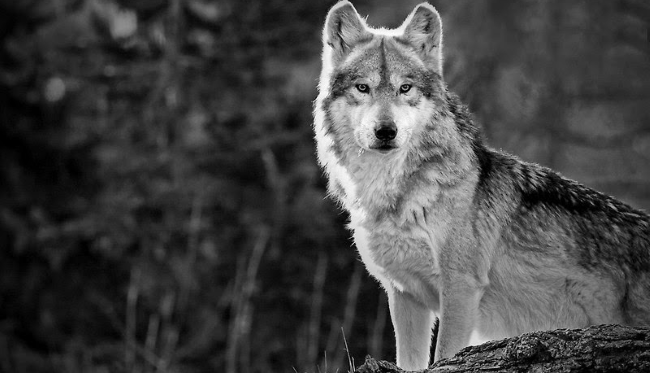In a world overflowing with distractions and information overload, developing heightened awareness has become not just beneficial but essential. The concept of “eagle vision” represents the ability to see beyond surface-level observations, perceive patterns others miss, and maintain clarity amidst chaos.
Throughout human history, cultures have looked to the eagle as a symbol of vision, wisdom, and elevated perspective. This majestic bird can spot prey from miles away and soar at altitudes that provide a comprehensive view of the landscape below. Similarly, cultivating eagle vision in our own lives means developing the capacity to rise above limiting perspectives and gain clarity that transforms decision-making, relationships, and personal growth.
🦅 Understanding the Foundation of Eagle Vision
Eagle vision isn’t about supernatural abilities or mystical powers. It’s a trainable skill rooted in cognitive enhancement, mindfulness, and intentional observation. When eagles hunt, they don’t simply see more—they process visual information differently, filtering out irrelevant details while focusing intently on what matters. This selective attention combined with a broader perspective creates their legendary hunting success.
For humans, developing eagle vision means strengthening several interconnected capabilities. First, there’s the ability to zoom out and see the bigger picture, understanding how individual elements connect within larger systems. Second, there’s the capacity to zoom in with laser focus when needed, noticing subtle details that reveal important truths. Finally, there’s the agility to shift between these modes fluidly, adapting your perceptual lens to match the situation.
Neuroscience research supports the trainability of these skills. Studies on attention, perception, and awareness demonstrate that our brains possess remarkable plasticity. Regular practice of specific exercises can literally rewire neural pathways, enhancing our observational capacities and information processing speed. The key lies in consistent, deliberate practice combined with the right mental frameworks.
The Mental Obstacles Clouding Your Vision
Before we can elevate our awareness, we must identify what’s blocking it. Modern life presents unique challenges to maintaining clear perception. Digital technology, while connecting us globally, fragments our attention into countless micro-moments. The average person checks their phone over 150 times daily, creating a pattern of constant disruption that prevents deep observation.
Cognitive biases represent another significant barrier. Our brains evolved to make quick judgments based on limited information—a survival mechanism that served our ancestors well. However, in complex modern contexts, these mental shortcuts often mislead us. Confirmation bias makes us see only information supporting existing beliefs. The availability heuristic causes recent or dramatic events to disproportionately influence our perception of reality.
Emotional reactivity further clouds judgment. When we’re anxious, angry, or overwhelmed, our perceptual field narrows dramatically. The brain’s threat-detection system activates, focusing attention on potential dangers while missing opportunities and subtle information. This tunnel vision prevents the expansive awareness that characterizes eagle vision.
Information Overload and Decision Fatigue
The sheer volume of information confronting us daily exceeds what any human mind can process effectively. We’re exposed to more information in a single day than people centuries ago encountered in their entire lifetimes. This constant bombardment creates decision fatigue—a depleted state where our judgment deteriorates, and we default to mental shortcuts that compromise clarity.
Breaking through these obstacles requires both awareness of their existence and strategic interventions. Recognizing when biases influence your thinking represents the first step. Creating systems that reduce unnecessary decisions preserves cognitive resources for what truly matters. Establishing boundaries with technology prevents constant interruption from fracturing your attention.
🧘 Cultivating Present-Moment Awareness
Eagle vision begins with presence. An eagle doesn’t hunt while distracted by regrets about missed prey yesterday or anxieties about tomorrow’s weather. It exists fully in the present moment, all senses engaged with current reality. For humans, developing this quality requires intentional practice, as our minds naturally wander to past and future.
Mindfulness meditation provides one of the most effective pathways to enhanced present-moment awareness. Research published in psychological science journals demonstrates that regular meditation practice increases gray matter density in brain regions associated with attention and sensory processing. Even brief daily sessions—10 to 15 minutes—produce measurable improvements in focus and observational capacity.
The practice itself is elegantly simple, though not always easy. You sit comfortably, direct attention to your breath, and notice when your mind wanders—which it will, repeatedly. Rather than judging yourself, you gently return focus to breathing. This simple act of noticing distraction and returning to presence strengthens the neural circuits underlying attention control.
Sensory Awareness Exercises
Beyond formal meditation, incorporating sensory awareness throughout your day amplifies perceptual abilities. Try this exercise: pause whatever you’re doing and systematically engage each sense. What do you see, including peripheral vision? What sounds exist in your environment, both obvious and subtle? What physical sensations can you detect—temperature, texture, muscle tension?
This practice interrupts autopilot mode, the state where we move through routines unconsciously, barely registering our surroundings. By regularly checking in with sensory experience, you train your brain to maintain broader awareness even during routine activities. Over time, this heightened sensory engagement becomes more natural, requiring less conscious effort.
Developing Pattern Recognition Skills
Eagles excel at pattern recognition, distinguishing prey from similar-looking objects across vast distances. Similarly, cultivating eagle vision requires developing the ability to identify meaningful patterns within complex information landscapes. Pattern recognition represents a form of intelligence distinct from analytical reasoning—it’s about seeing connections, trends, and structures that aren’t immediately obvious.
This skill develops through exposure to diverse information combined with reflective analysis. When you read about seemingly unrelated topics—history, science, art, business—your brain begins forming unexpected connections. These cross-domain insights often produce the most valuable perspectives, revealing patterns invisible to those with narrow expertise.
Actively looking for patterns strengthens this capacity. When observing situations, ask yourself: What patterns do I notice? Have I seen something similar before? What underlying dynamics might be driving surface-level events? This questioning mindset shifts you from passive observer to active sense-maker, training your brain to automatically search for meaningful patterns.
The Power of Strategic Thinking
Strategic thinking represents pattern recognition applied to future possibilities. Eagles don’t just see what is—they anticipate what will be, predicting prey movements and positioning themselves advantageously. Developing strategic thinking requires practicing scenario analysis, considering multiple potential futures and planning responses to each.
Regular strategy sessions with yourself enhance this capability. Monthly or quarterly, step back from daily operations and consider broader questions: Where are current trends leading? What emerging patterns might disrupt existing approaches? What opportunities are others missing? This practice elevates your perspective from ground-level tactics to eagle-height strategy.
📚 Building Your Knowledge Foundation
Eagle vision requires not just keen observation but also frameworks for interpreting what you observe. Knowledge provides these interpretive frameworks—mental models that help you make sense of complex information. The more diverse and robust your knowledge base, the more patterns you’ll recognize and understand.
Prioritize breadth alongside depth. While expertise in your field matters, exposure to multiple disciplines creates unique advantages. Biologist E.O. Wilson called this “consilience”—the integration of knowledge across domains. Understanding psychology improves your reading of human behavior. Economics provides insight into incentive structures. History reveals how similar situations have unfolded previously.
Create a systematic learning approach. Dedicate time weekly to exploring topics outside your primary focus. Read books spanning multiple genres. Listen to podcasts featuring experts from diverse fields. Take online courses in subjects that intrigue you. This intellectual cross-training builds a richer knowledge network, enabling more sophisticated pattern recognition.
Critical Thinking and Information Evaluation
In our information-saturated era, discernment matters as much as knowledge acquisition. Eagle vision includes the ability to distinguish reliable information from misinformation, recognizing biased sources and evaluating claims critically. Develop the habit of asking: What evidence supports this claim? What might the source’s biases be? What alternative explanations exist?
Understanding logical fallacies and cognitive biases creates a mental filter that catches faulty reasoning. Familiarize yourself with common fallacies like ad hominem attacks, false dichotomies, and appeals to authority. Recognize bias patterns—both in information sources and your own thinking. This critical evaluation prevents your expanded awareness from being filled with inaccurate information.
🎯 Focusing Attention in a Distracted World
While eagle vision includes broad perspective, it also requires intense focus when needed. Eagles can spot a rabbit from two miles away, then dive with pinpoint accuracy at speeds exceeding 100 miles per hour. This combination of expansive awareness and concentrated attention represents the ideal we’re cultivating.
Deep work—extended periods of focused concentration on cognitively demanding tasks—builds attentional capacity. Author Cal Newport describes deep work as increasingly rare and valuable in modern economies. Practicing it means eliminating distractions, setting clear objectives, and sustaining concentration for extended periods, typically 90-120 minutes.
Create environmental conditions supporting deep focus. Establish a dedicated workspace free from interruptions. Use website blockers to prevent digital distractions. Communicate boundaries to others during focus periods. These external structures reduce the willpower required to maintain concentration, making deep work more sustainable.
The Pomodoro Technique and Energy Management
For those building focus capacity, the Pomodoro Technique offers an accessible starting point. Work for 25-minute intervals followed by 5-minute breaks, with longer breaks after four cycles. This structure acknowledges attentional limits while gradually extending focus duration. Over time, you can extend working intervals as your concentration endurance improves.
Energy management matters as much as time management. Focus capacity fluctuates throughout the day based on ultradian rhythms—natural cycles of alertness and fatigue occurring roughly every 90-120 minutes. Schedule your most demanding cognitive work during peak energy periods, typically morning for most people. Protect these high-value hours from meetings and administrative tasks.
Emotional Intelligence and Awareness
Eagle vision isn’t purely cognitive—it includes emotional awareness both internally and interpersonally. Eagles maintain remarkable composure during hunts, neither overexcited when prey appears nor discouraged by misses. This emotional regulation enables clear perception unclouded by reactive feelings.
Developing emotional intelligence begins with internal awareness. Practice labeling emotions as they arise: “I’m feeling frustrated,” “That’s anxiety,” “I notice excitement.” This simple naming activates prefrontal cortex regions that help regulate emotion, creating space between feeling and reaction. With practice, you develop the capacity to experience emotions without being controlled by them.
Interpersonal emotional awareness—reading others’ emotional states and responding skillfully—represents another dimension of eagle vision. Notice not just what people say but how they say it. Observe body language, facial expressions, and tone. These nonverbal cues often reveal more than words, providing insight into true feelings and intentions.
Empathy as a Perceptual Tool
Empathy enhances awareness by enabling you to understand situations from multiple perspectives. When you can genuinely see through another’s eyes, you access information unavailable from your limited viewpoint. This doesn’t mean abandoning your perspective but rather adding others’ viewpoints, creating a more complete picture.
Practice perspective-taking deliberately. When encountering disagreement or misunderstanding, pause and genuinely try to understand the other person’s logic. What might they be seeing that you’re missing? What experiences shape their viewpoint? What valid concerns might underlie positions you initially dismissed? This practice expands your perceptual range significantly.
🌄 Creating Space for Reflection and Integration
Eagles don’t hunt constantly—they alternate between active pursuit and perched observation, periods of rest where they survey their territory from elevated vantage points. Similarly, developing eagle vision requires creating space for reflection, allowing your mind to process observations and integrate learning.
Regular journaling provides a powerful reflection practice. Writing clarifies thinking, revealing patterns and connections you might otherwise miss. Try different journaling approaches: free writing to explore thoughts without censorship, structured prompts to examine specific questions, or gratitude journaling to cultivate positive awareness. Even 10-15 minutes daily produces significant benefits.
Schedule regular retreats from routine—quarterly days devoted to reflection and strategic thinking. Remove yourself from normal environments, minimize digital connectivity, and spend extended time reviewing progress, identifying patterns, and refining direction. These periodic elevation moments provide the broader perspective that daily immersion prevents.
The Role of Solitude in Clarity
Solitude offers unique benefits for developing awareness. Without social stimulation and external demands, your mind reveals its natural patterns and preoccupations. Insights that remain buried during busy engagement surface during quiet alone time. Regular solitude—walks alone, sitting quietly, solo retreats—creates conditions for deeper self-awareness and clarity.
Many accomplished individuals throughout history attributed breakthrough insights to solitude. Einstein’s thought experiments, Darwin’s long walks, and numerous scientific and artistic breakthroughs emerged during periods of solitary reflection. Build this practice into your life systematically rather than waiting for it to happen accidentally.
Practical Application: Integrating Eagle Vision Daily
Understanding eagle vision conceptually differs from embodying it practically. Integration requires deliberate practice embedded in daily routines. Start your day with a brief centering practice—even five minutes of meditation or conscious breathing establishes a foundation of awareness you can return to throughout the day.
Create awareness triggers throughout your environment. These might be physical cues—a specific object on your desk, a note on your mirror—or temporal triggers like transition moments between activities. When you encounter these triggers, pause briefly and check in: Am I present? What am I noticing? What’s my current mental and emotional state?
End each day with a brief review. What did you notice today? What patterns emerged? What went well, and what could improve? This closing reflection reinforces learning and ensures insights don’t disappear into the busyness of life. Over time, these bookend practices—morning centering and evening review—create a container supporting elevated awareness throughout the day.
Weekly and Monthly Practices
Complement daily practices with weekly and monthly rhythms. Weekly, conduct a more extended review: What significant patterns emerged this week? What learning occurred? What adjustments would improve next week? Monthly, zoom out further: Are you progressing toward meaningful goals? What strategic adjustments might serve you? Is your life aligned with your values and aspirations?
These nested temporal rhythms—daily, weekly, monthly—mirror the eagle’s ability to adjust visual focus. Sometimes you need ground-level detail; other times, you need elevated strategic perspective. Building practices at multiple timescales ensures you develop both capabilities.
🚀 Sustaining Your Practice Over Time
Initial enthusiasm for developing eagle vision may be strong, but sustaining practice requires addressing inevitable challenges. Motivation fluctuates, life circumstances change, and progress isn’t always linear. Building resilience into your practice prevents temporary setbacks from becoming permanent abandonment.
Start small and build gradually. Better to meditate five minutes daily than plan hour-long sessions you’ll never maintain. Small consistent actions compound over time, producing dramatic long-term results. As practices become habitual, gradually extend or deepen them. This incremental approach builds sustainable change rather than unsustainable bursts followed by collapse.
Find community support when possible. While solitude matters, connection with others pursuing similar development provides encouragement, accountability, and shared learning. This might be a meditation group, a mastermind focused on personal development, or even online communities dedicated to awareness and growth. Shared practice often proves more sustainable than isolated efforts.
Finally, embrace imperfection. You won’t maintain perfect consistency. Life will interrupt practice. You’ll forget techniques and fall back into old patterns. This is normal, not failure. What matters isn’t perfection but persistence—repeatedly returning to practice after inevitable interruptions. Each return strengthens your commitment and builds the resilience that ultimately makes eagle vision a stable capability rather than a temporary state.
The Transformative Impact of Elevated Awareness
As eagle vision develops, its effects ripple through every life dimension. Decision-making improves as you perceive situations more completely, anticipate consequences more accurately, and recognize opportunities others miss. Relationships deepen as you read emotional dynamics more skillfully and respond with greater wisdom. Professional performance often improves dramatically as enhanced focus and strategic thinking compound advantages.
Perhaps most significantly, elevated awareness transforms your relationship with life itself. Rather than moving through existence on autopilot, barely registering experience, you become fully present to the richness of each moment. This presence doesn’t eliminate challenges, but it changes your relationship to them. You meet difficulties with greater clarity, respond rather than react, and maintain perspective amidst temporary turbulence.
The journey to eagle vision represents an ongoing practice rather than a destination. There’s no finish line where you’ve fully arrived. Instead, there’s continuous deepening—expanding awareness, refining perception, and discovering new dimensions of clarity previously invisible. This endless frontier of growth makes the practice perpetually engaging, offering rewards that compound throughout a lifetime.
By committing to this path of elevated awareness, you join a tradition stretching back millennia—wise individuals throughout history who recognized that perception shapes reality more than reality shapes perception. As you develop eagle vision, you don’t just see the world differently; you participate in it differently, contributing unique insights and possibilities that emerge only from your expanded awareness. The heights await those willing to spread their wings and rise above limiting perspectives. Your journey to eagle vision begins with a single intentional moment of presence—why not make that moment now? 🦅
Toni Santos is a visual researcher and educational designer specializing in the development and history of tactile learning tools. Through a hands-on and sensory-focused lens, Toni investigates how physical objects and textures have been used to enhance understanding, memory, and creativity across cultures and ages, while exploring the transformative practices of shamanic journeying, sacred plant medicines, and spiritual rituals. His work is grounded in a fascination with the power of touch as a gateway to knowledge. From embossed maps and textured alphabets to handcrafted manipulatives and sensory kits, Toni uncovers the subtle ways tactile tools shape cognitive development and learning experiences, while engaging with shamanic journeying and altered states, sacred plant medicines and their use, spirit animals and totems, and rituals for personal transformation. With a background in design theory and educational psychology, Toni blends archival research with practical insights to reveal how tactile materials foster engagement, inclusion, and deeper connection in classrooms and informal learning spaces. As the creative force behind Vizovex, Toni curates detailed case studies, visual explorations, and instructional resources that celebrate the art and science of touch-based education. His work is a tribute to: The transformative role of tactile tools in learning The intersection of sensory experience, cognition, and spiritual insight The craft and innovation behind educational objects and ritual practices Whether you’re an educator, designer, or lifelong learner, Toni invites you to explore the rich textures of knowledge—one touch, one tool, one discovery at a time.




